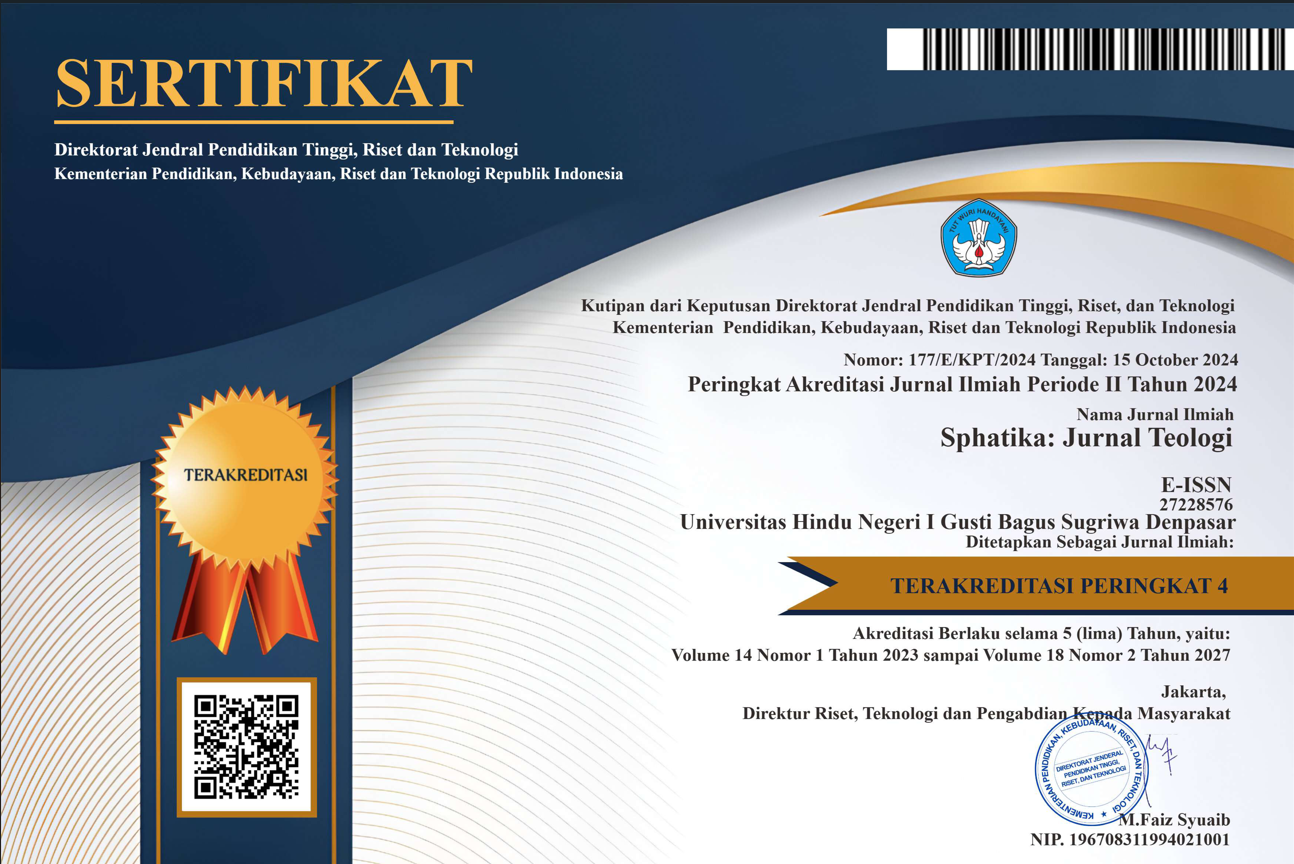Wiku Catur Asrama Menurut Lontar Wasista Tattwa
DOI:
https://doi.org/10.25078/sphatika.v11i1.1948Keywords:
wiku; catur asrama; Wasista Tattwa.Abstract
Wiku according to Lontar Wasista Tattwa is a well-behaved saint, a descendant of a saint, able to recite and master the third Vedic mantra, his behavior is perfect, always meditating on God. One type of wiku described in the Wasista Tattwa ejection is the boarding chess board, namely: brahmacari wiku, grhasta wiku, wanaprasta, and bhiksuka. Brahmacari wiku duty is not to be angry with the community, there is nothing that be desired, there is no binding work in the world, no house or residence. The obligation of Wiku Grehastha is to be married and have children, make the family happy, always diligently study the three Vedas, be friendly to guests, always obey God, and be diligent in practicing yoga. Obligation of wiku wanaprasta is to direct oneself to God and attain self-awareness, no longer commit myself to household tasks and social community. The duty of the bhiksuka wiku is to focus on the spiritual life or free oneself from his avidya (spiritual darkness).
References
Kamus Besar Bahasa Indonesia. 2008. Jakarta: Pusat Bahasa Departemen Pendidikan Nasional.
Pendit, Nyoman S. 2009. Glosari Sanskerta Kontemporer. Denpasar: Sarad.
Poerwadarminta, W. J. S. 1985. Kamus Umum Bahasa Indonesia (Cet. VIII). Jakarta : Balai Pustaka.
Pudja, G. 1999. Bhagavadgītā. Surabaya: Paramita.
Radhakrishnan, S. 2008. Upaniṣad-Upaniṣad Utama. Terjemahan oleh Agus S. Mantik. Surabaya: Paramita.
Sudharta, Tjok Rai, Ida Bagus Oka Punia Atmaja. 2001. Upadesa tentang Ajaran-Ajaran Agama Hindu. Surabaya: Paramita.
Tim Penulis. 2005. Alih Aksara dan Alih Lontar Wasista Tattwa. Denpasar: Dinas Kebudayaan Bali.















